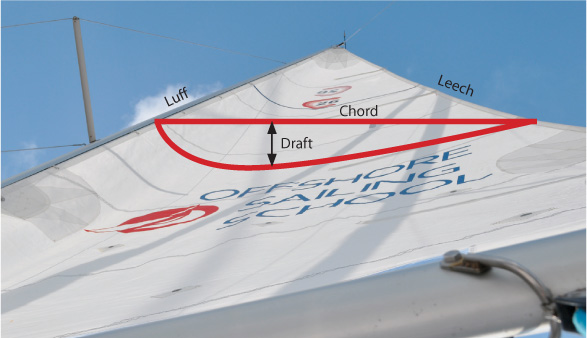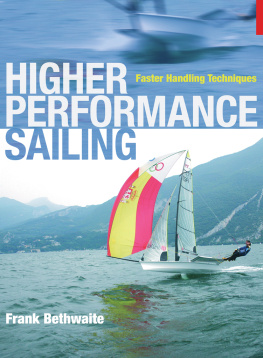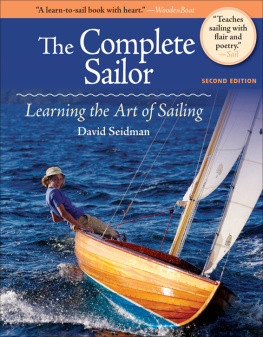

Copyright 2012 by steve Colgate. All rights reserved. Except as permitted under the United States Copyright Act of 1976, no part of this publication may be reproduced or distributed in any form or by any means, or stored in a database or retrieval system, without the prior written permission of the publisher.
ISBN: 978-0-07-179345-2
MHID: 0-07-179345-3
The material in this eBook also appears in the print version of this title: ISBN: 978-0-07-179346-9, MHID: 0-07-179346-1.
All trademarks are trademarks of their respective owners. Rather than put a trademark symbol after every occurrence of a trademarked name, we use names in an editorial fashion only, and to the benefit of the trademark owner, with no intention of infringement of the trademark. Where such designations appear in this book, they have been printed with initial caps.
McGraw-Hill eBooks are available at special quantity discounts to use as premiums and sales promotions, or for use in corporate training programs. To contact a representative please e-mail us at bulksales@mcgraw-hill.com.
TERMS OF USE
This is a copyrighted work and The McGraw-Hill Companies, Inc. (McGraw-Hill) and its licensors reserve all rights in and to the work. Use of this work is subject to these terms. Except as permitted under the Copyright Act of 1976 and the right to store and retrieve one copy of the work, you may not decompile, disassemble, reverse engineer, reproduce, modify, create derivative works based upon, transmit, distribute, disseminate, sell, publish or sublicense the work or any part of it without McGraw-Hills prior consent. You may use the work for your own noncommercial and personal use; any other use of the work is strictly prohibited. Your right to use the work may be terminated if you fail to comply with these terms.
THE WORK IS PROVIDED AS IS. McGRAW-HILL AND ITS LICENSORS MAKE NO GUARANTEES OR WARRANTIES AS TO THE ACCURACY, ADEQUACY OR COMPLETENESS OF OR RESULTS TO BE OBTAINED FROM USING THE WORK, INCLUDING ANY INFORMATION THAT CAN BE ACCESSED THROUGH THE WORK VIA HYPERLINK OR OTHERWISE, AND EXPRESSLY DISCLAIM ANY WARRANTY, EXPRESS OR IMPLIED, INCLUDING BUT NOT LIMITED TO IMPLIED WARRANTIES OF MERCHANTABILITY OR FITNESS FOR A PARTICULAR PURPOSE. McGraw-Hill and its licensors do not warrant or guarantee that the functions contained in the work will meet your requirements or that its operation will be uninterrupted or error free. Neither McGraw-Hill nor its licensors shall be liable to you or anyone else for any inaccuracy, error or omission, regardless of cause, in the work or for any damages resulting therefrom. McGraw-Hill has no responsibility for the content of any information accessed through the work. Under no circumstances shall McGraw-Hill and/or its licensors be liable for any indirect, incidental, special, punitive, consequential or similar damages that result from the use of or inability to use the work, even if any of them has been advised of the possibility of such damages. This limitation of liability shall apply to any claim or cause whatsoever whether such claim or cause arises in contract, tort or otherwise.
Contents
Preface
This book is for sailors who know the basics and want to fine-tune their sailing skills. It is for those who want:
 to sail their boats faster, better, and more efficiently;
to sail their boats faster, better, and more efficiently;
 to overcome the fear of flying a spinnaker;
to overcome the fear of flying a spinnaker;
 to know what to do in emergencies; and,
to know what to do in emergencies; and,
 to get more satisfaction from sailing than ever before
to get more satisfaction from sailing than ever before
whether they are embarking on a day sail, taking a weekend cruise, or entering their first or their fiftieth race.
To sail fast usually means to sail well. Speed means precision of technique. Precision of technique creates self-confidence and personal satisfaction.
Chapter 1
Sails
SAILS AND SAIL SHAPE
A boats speed depends largely on how its sails are set and trimmed. And there are an infinite variety of sail types, shapes, and materials. Todays sails are made of many materials, including Dacron, a material that stretches constantly as the forces on it change. With the invention of Kevlar and spectrasail material that doesnt stretchsails are now being built with a set shape, and it is not as necessary to control the stretch as before but sail shape understanding is still critical to performance sailing. Forces affecting sails include wind-strength increases or decreases, and also pressure changes on the sails when the boat slows down as it plows into waves or speeds up when it is surfing or sailing in smooth water. As you sail in these conditions you can control this stretch, and thereby the shape of the sail, using numerous adjustment devices. Well get to those in a bit, but before we look at the specifics, lets discuss the desirable end result.
Sails power a sailboat much like an engine powers a car with a manual transmission. When a car is moving slowly, uphill, or over a bumpy terrain, you keep it in low gear to add power. As it picks up speed and the ground levels, you shift to a higher gear. When the car is moving fast on a smooth road, you shift to an even higher gear. So, too, with a sailboat. Full sails are the low gear and flat sails are high gear. When seas are heavy and the boat is sailing slowly, almost stopping as it hits each wave, the sails need power. Full sails are the answer. In smooth water and high winds when the sailboat is moving fastest, flat sails are desirable.
DRAFT
The mainsail is a very versatile sail and can be made flat or full at will. But, you may ask, what is a full sail or a flat sail? The terms are relative. A sail is flatter or fuller than another based on the relationship of the maximum depth of the curvature (the draft) to the distance from luff to leech (the chord). shows the cross section of a mainsail. An imaginary line drawn from luff to leech is the chord. A line drawn perpendicular to the chord at the point where the sail is the greatest distance from the chord is the draft or camber. The camber-to-chord ratio is the relation of this distance to the chord, usually expressed as a percentage. If the chord is 120 and the draft of camber is 12 deep, the camber-to-chord ratio is 10 to l or 10%. Sails can be used effectively as flat as 5% or as full as 20% at the center of effort, depending on the class of boat and the sailing conditions. The draft varies at different heights up the sail.

Figure 1-1. Draft is the maximum depth of the sail measured from the chordan imaginary straight line from luff to leech. Here its too far forward.
Of even more importance is the position of maximum draft in the sail. shows the maximum draft aft, near the leech of the mainsail. As the breeze freshens, sail material stretches and the draft tends to move aft toward the leech. This movement will cause the battens to cock to windward in the mainsail and produce a less efficient airfoil. Increased tension on the luff can keep this movement to a minimum.
Next page








 to sail their boats faster, better, and more efficiently;
to sail their boats faster, better, and more efficiently;